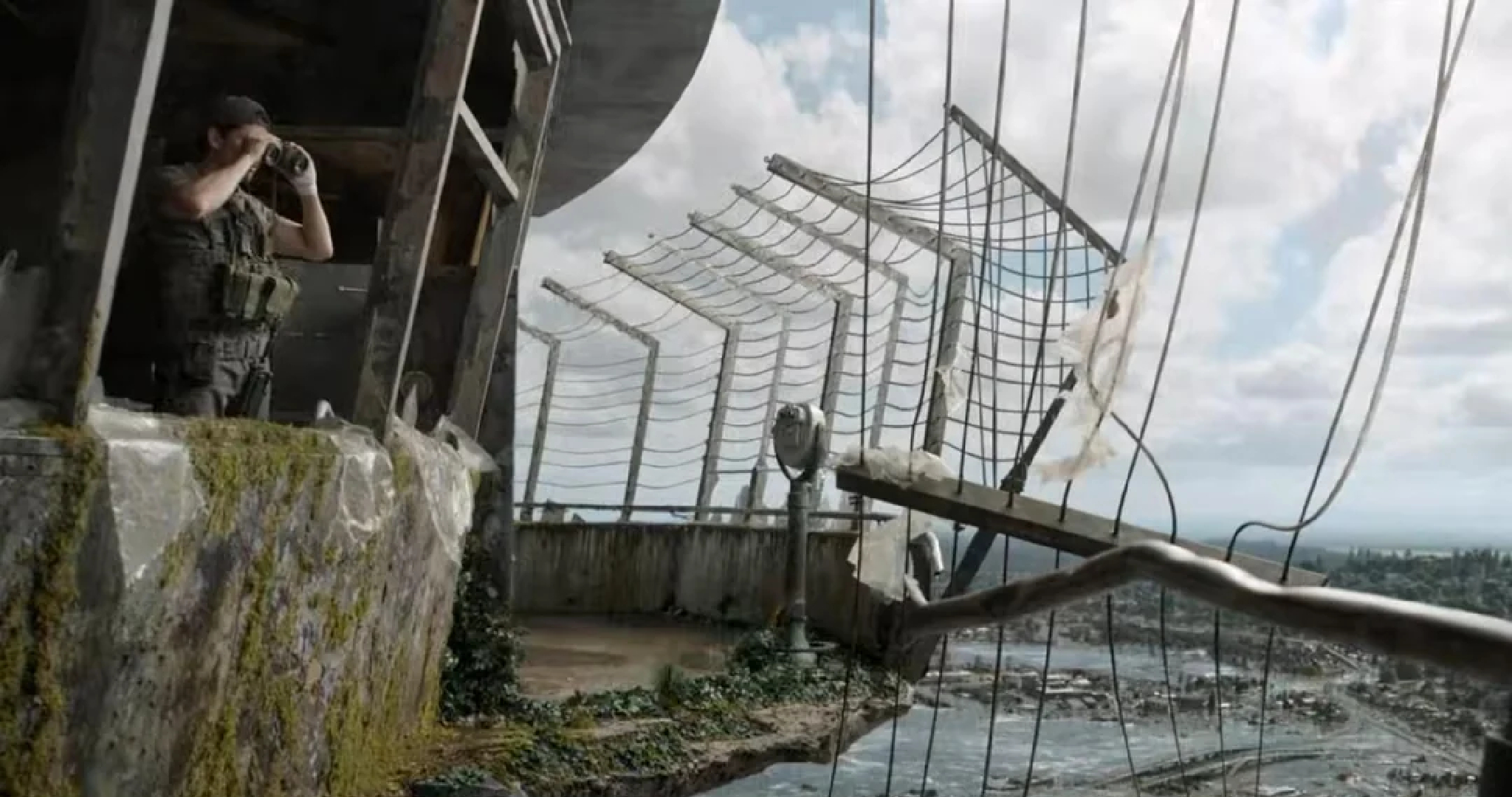
Fans with a keen eye have noticed an interesting inconsistency in “The Last of Us” Season 2, Episode 3 – “The Path,” that’s generated quite a buzz among viewers. In this episode, we see Manny stationed within Seattle’s famous Space Needle, observing as Ellie and Dina venture towards the ruined city. This quick scene is both a tribute to and a departure from the game, causing quite a stir among dedicated gamers. The placement of Manny inside the Space Needle, which was submerged due to floods in the game, on an island outside WLF control, raises questions since it appears he’s monitoring enemy territory without any apparent awareness of this geographical anomaly.
In a nutshell, this creative freedom isn’t simply an unintentional oversight; instead, it reflects the unique way the series handles adaptations. While it painstakingly recreates specific game details like individual items and camera angles, it also boldly reimagines other parts of the world. This flexibility caters to both new viewers and long-time fans, maintaining the emotional heart of the story while modifying details that may not suit television perfectly. The Space Needle scene encapsulates this balance beautifully – it respects the landmark’s legendary status while streamlining complex geographical details that could necessitate excessive explanation on TV.
In “The Path,” there’s a scene that unfolds following a three-month time leap. This storytelling decision differs from the games, enabling characters to cope with past tragedies without being immediately overwhelmed by raw emotions. During this interval, Abby and her team return to Seattle to reunite with the Washington Liberation Front (WLF). However, in this episode, only Manny is present, keeping watch at his post, as Ellie and Dina enter the city.
The intriguing geographical contradiction in this setting emphasizes the show’s unique method of constructing its world. In the game’s narrative, Seattle experienced devastating floods which reshaped its terrain significantly, transforming areas of downtown into isolated islands disconnected from the mainland. The Space Needle’s placement on what is commonly referred to as “Seraphite Island” makes it a challenging destination for WLF members, as they must navigate through hostile territories controlled by their adversaries to reach it.
Discussions online about this inconsistency have provided intriguing viewpoints regarding the creative decisions made on the show’s portrayal of Seattle post-apocalypse. Some viewers propose that the series could be intentionally simplifying the geography, excluding flooded areas and island domains to make the storyline more straightforward. Others ponder if the location of the Space Needle in the show might be altered, or if perhaps the territories controlled by different factions are depicted differently in the show’s alternate reality.
The series adapts game elements flexibly as necessary. For example, instead of hurrying through intense scenes, the narrative pace has been slowed down, allowing characters to fully absorb events. Additionally, it delves deeper into some character relationships and backstories that were less explored in the original games.
This modification opens up intriguing opportunities for upcoming episodes. If the Space Needle stays part of the WLF’s territory, it could significantly influence various crucial in-game encounters that were based on the territorial boundaries of flooded Seattle. Will the series preserve the renowned sky bridge scenes, which are often hailed as game highlights? Or could these aspects be redesigned to align with the show’s geographical layout instead?
In my perspective as a devoted fan, it’s intriguing to consider that Manny’s position in the watchtower could hint at an enlarged part for his character. Given the merging or disappearance of certain game characters during adaptation, it seems plausible that Manny might take on storylines originally intended for others, particularly those centered around interactions with Ellie, especially those involving confrontations.
What’s so captivating about this minor aspect is how it illustrates the delicate equilibrium adaptations must achieve. The makers of The Last of Us seem to grasp perfectly what makes the series unique: the deeply moving tales of its characters, the intricate moral dilemmas of its universe, and the poignant aesthetics of its post-apocalyptic backdrop. By preserving these fundamental aspects and tweaking certain specifics, they’ve crafted a work that resonates with longtime fans while still being inviting to new viewers.
The observation deck at the Space Needle, though seemingly a small discrepancy, beautifully embodies the series’ ethos: prioritize emotional significance while being open to modify elements that work better for the medium. This deviation from the game’s original storyline might be my preferred adaptation so far, as it demonstrates a bold narrative approach that values impact over strict adherence to the source material. In essence, it’s not the precise depiction of Seattle’s architecture that holds the greatest importance, but rather the human narratives unfolding amidst its wreckage.
Read More
- Gold Rate Forecast
- PI PREDICTION. PI cryptocurrency
- Masters Toronto 2025: Everything You Need to Know
- Mission: Impossible 8 Reveals Shocking Truth But Leaves Fans with Unanswered Questions!
- SteelSeries reveals new Arctis Nova 3 Wireless headset series for Xbox, PlayStation, Nintendo Switch, and PC
- WCT PREDICTION. WCT cryptocurrency
- LPT PREDICTION. LPT cryptocurrency
- Eddie Murphy Reveals the Role That Defines His Hollywood Career
- Guide: 18 PS5, PS4 Games You Should Buy in PS Store’s Extended Play Sale
- Elden Ring Nightreign Recluse guide and abilities explained
2025-05-04 16:40